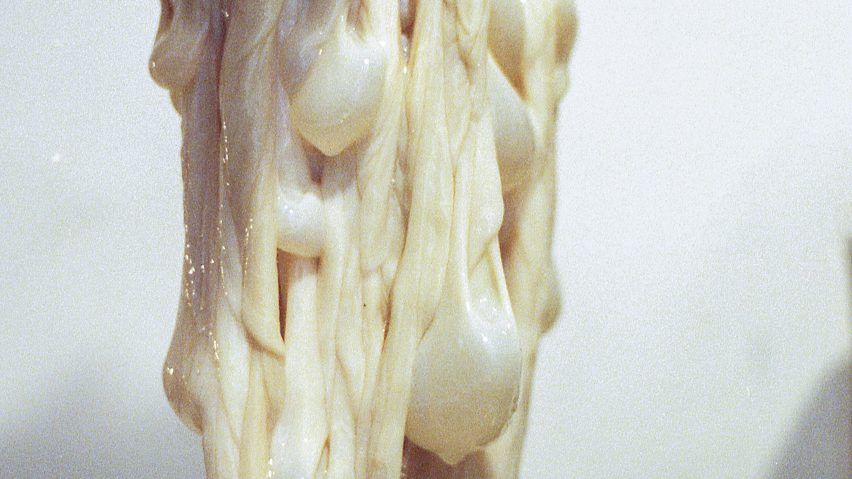
Eight designs from animal blood, skin and intestines
You may need a strong stomach to use these designs from animal leftovers, but you can't deny they have guts. From cow intestines to pig bladders, here are eight design projects exploring odd organic matter.
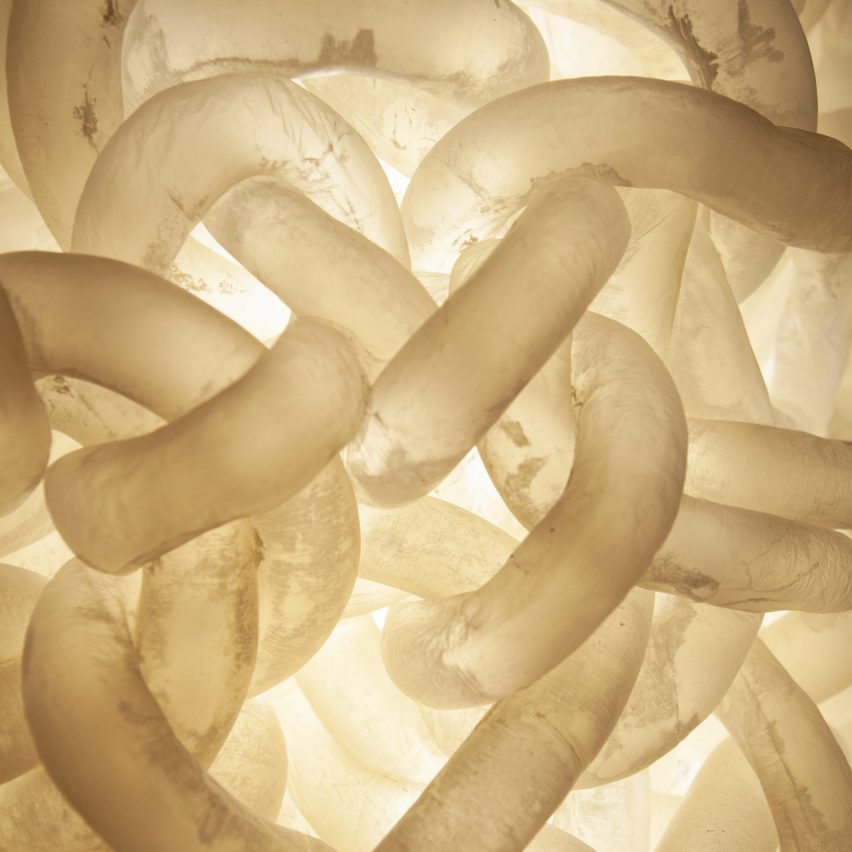
Cow intestines lighting, Kathrine Barbro Bendixen
Danish designer Kathrine Barbro Bendixen has created translucent tubular lighting from cow intestines and LEDs.
She decided to experiment with cow intestines after being inspired while making sausages for her family one Christmas. The intestines are sourced from a supplier in Denmark. After disinfecting and prepping them, the digestive tracts are blown up like balloons.
Barbro Bendixen works with their naturally curled forms and lights them from within to highlight their natural texture.
Read more about cow intestines lighting ›
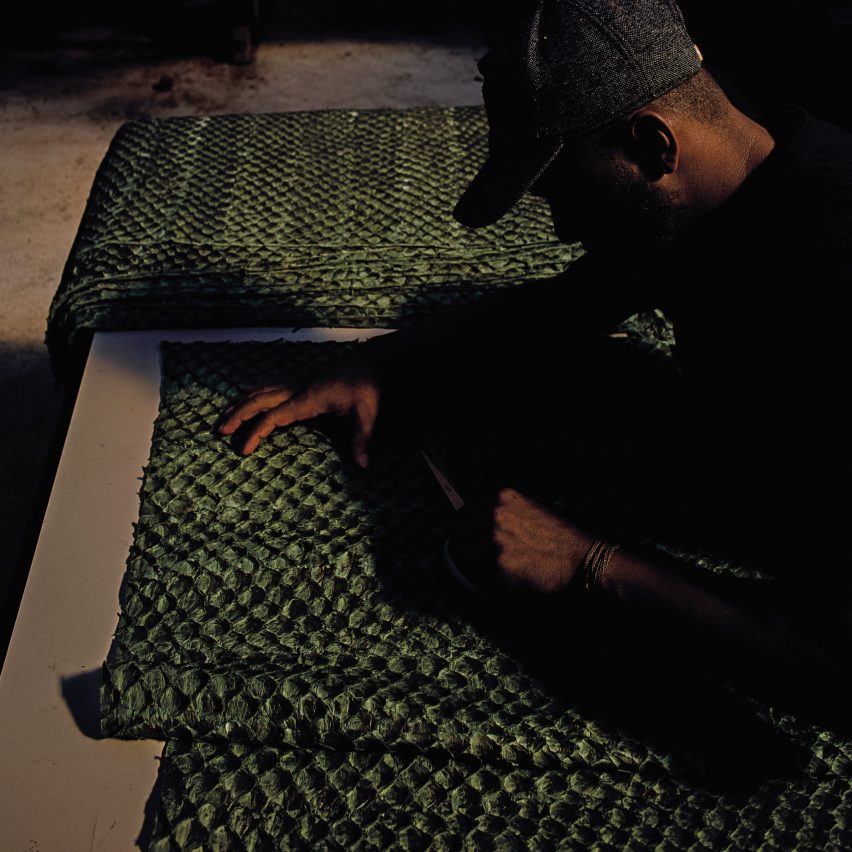
Pirarucu fish skin leather by Oskar Metsavaht
Brazilian designer Oskar Metsavaht has turned the skin of the pirarucu fish – a staple part of people's diet in northern Brazil – into leather.
The fish skins are usually discarded after eating, while cattle ranching can result in rainforest being destroyed to make way for grazing land. As well as providing a sustainable alternative, Metsavaht hired local artisans to make the fish skin leather to give back to communities in Brazil.
Read more about fish skin leather ›
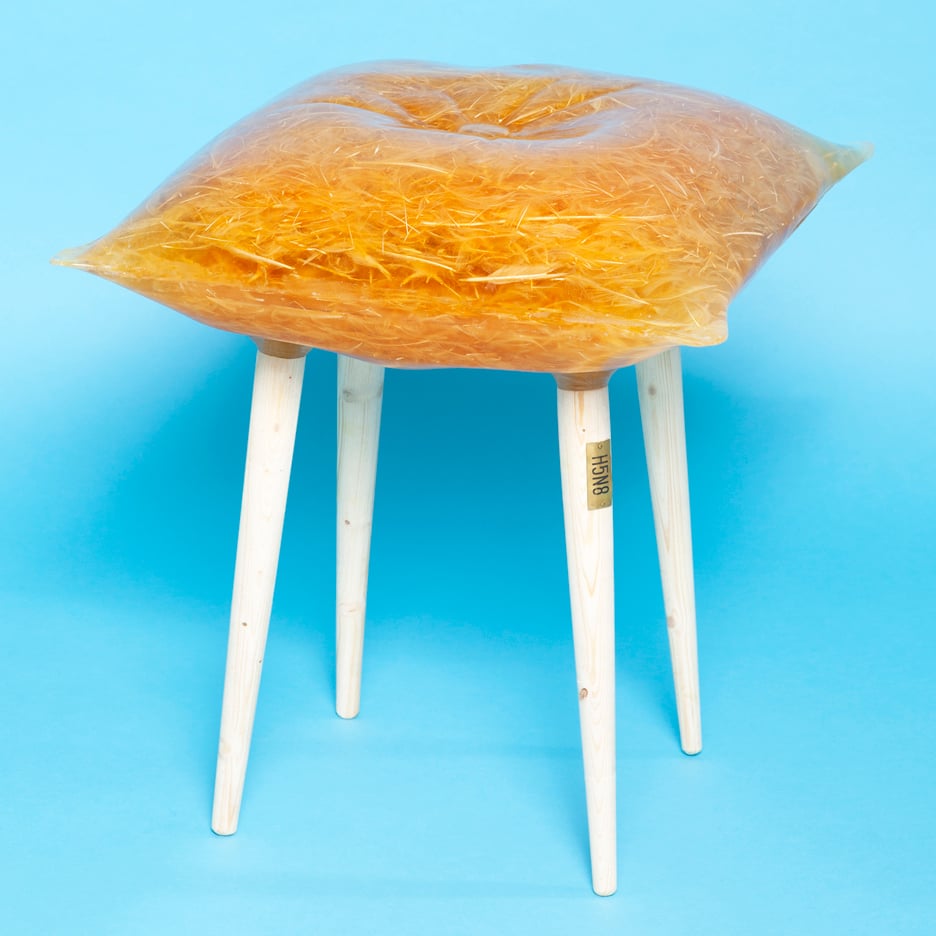
H5N8 stool, Emilie van Spronsen
Designer Emilie can Spronsen came up with a way to make use of the contaminated remains of chickens after an outbreak of avian flu hit the Netherlands – resulting in numerous birds being slaughtered to stop its spread.
The H5N8 stool – named after the virulent strain – has a seat made from dyed chicken feathers set in epoxy resin. Its shape appears like that of a translucent, plumped cushion but the material is in fact hard. Van Spronsen said she intended the furniture to be a "last homage" to the deceased birds.
Read more about the H5N8 Stool ›
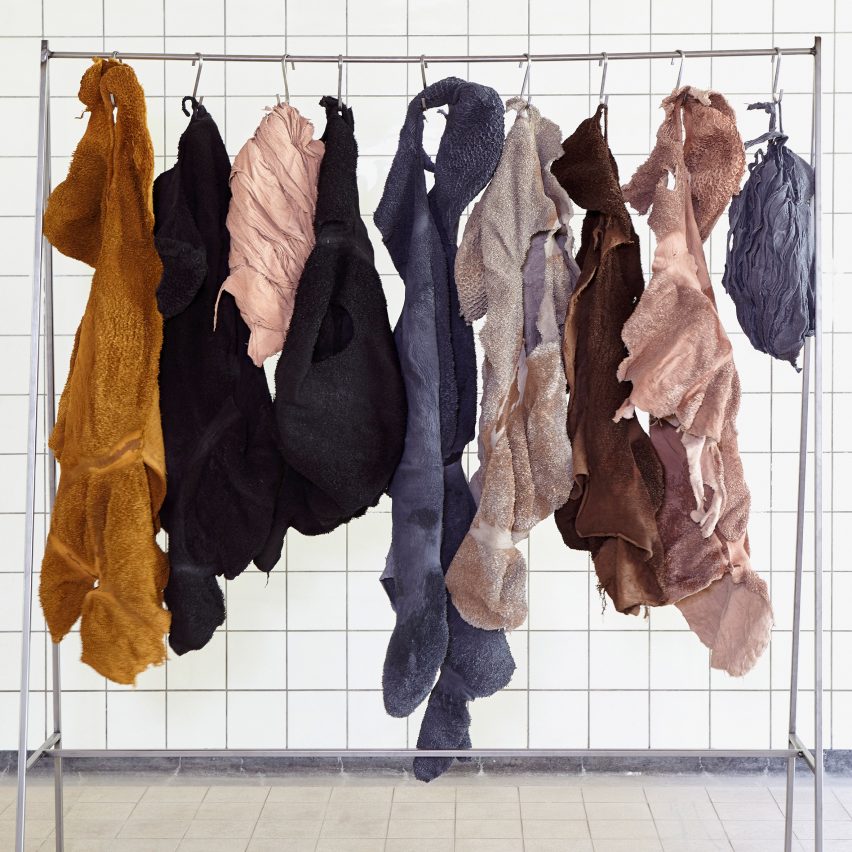
When Dutch designer Billie van Katwijk decided to turn cow stomachs into a more sustainable alternative to leather, after she discovered that they are usually discarded as waste material.
As cows have four different stomachs, once they are cleaned and tanned they each produce a leather-like material with a rich variety of textures. One stomach produces a furry texture, while another has a honeycomb structure. To demonstrate the potential of the material Van Katwijk made a series of handbags.
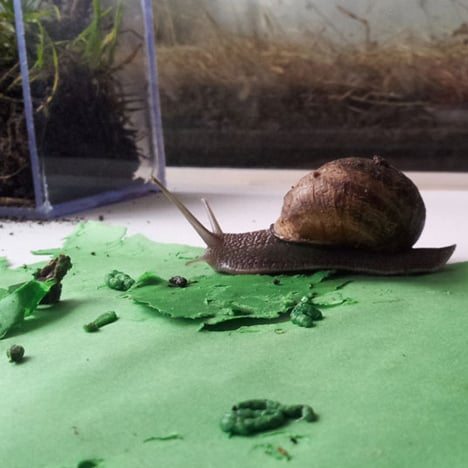
Snail poo tiles by Lieske Schreuder
When snails are fed paper and cardboard – one of their favourite snacks – their excrement takes on the hue of whatever they've been chewing. Dutch designer Lieske Schreuder fed mollusks on coloured paper and collected the vibrant poop.
Schreuder processed the snail poo in a machine of her own design, which grind, mixes and presses the waste material into colourful tiles. She also experimented with making threads of the colourful snail faeces to weave together.
Read more about snail poo tiles ›
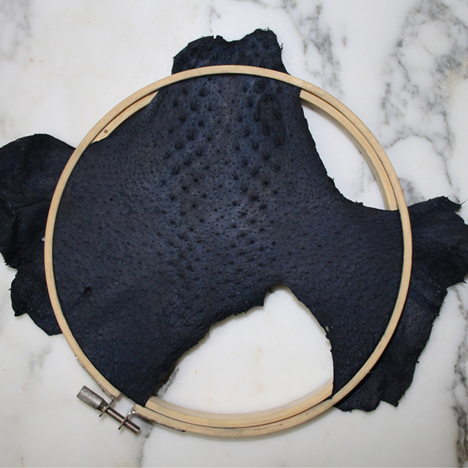
Goose skin leather by Vera Knoot
Geese are so numerous in the Netherlands that thousands of them are culled every year to stop them damaging eco systems and disrupting airports. Designer Vera Knoot worked with an expert in vegetable-tanning ostrich leather to create a material from unwanted geese carcasses.
Goose skin leather is thin, which makes it flexible, yet strong. The patterns left by places where there were feathers gives it an unusual stippled effect.
Read more about goose skin leather ›
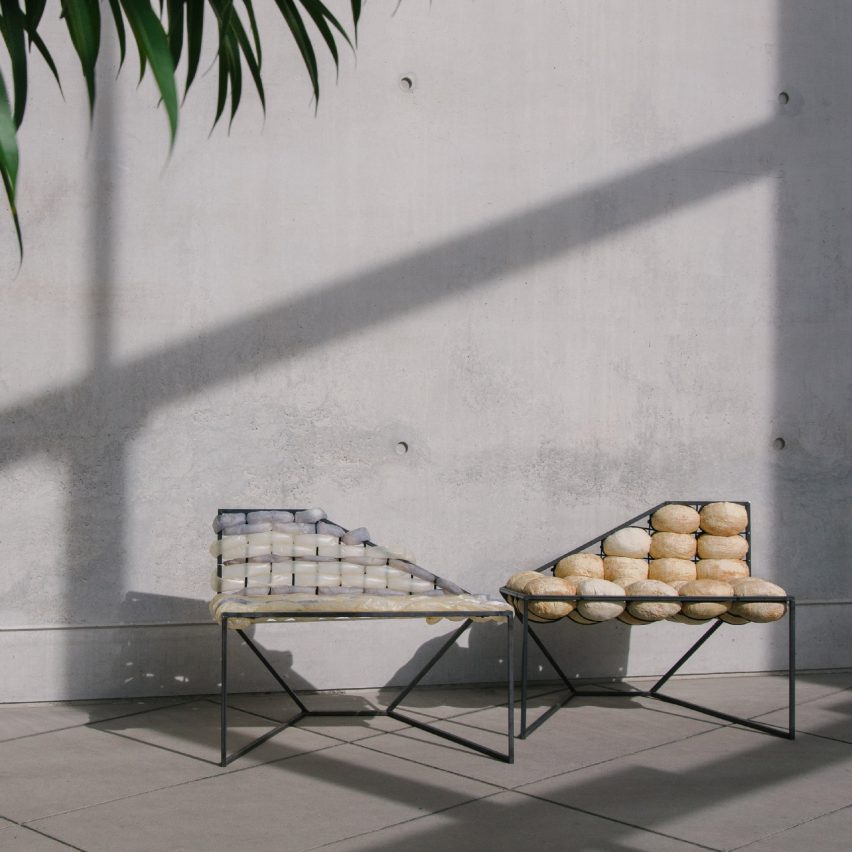
Inner Values by Tobias Trübenbacher
Instead of throwing away offal, industrial designer Tobias Trübenbacher found ways of turning unwanted animal organs into furniture for his project, Inner Values.
Trübenbacher took pig bladders and cow intestines, cleaned and tanned them, then massaged them in oil and soap to re-soften them. The bladders were stuffed with recycled bandage material, and the intestines inflated. Both were then fitted to chair frames to make padded upholstery for the furniture.
Read more about inner values ›
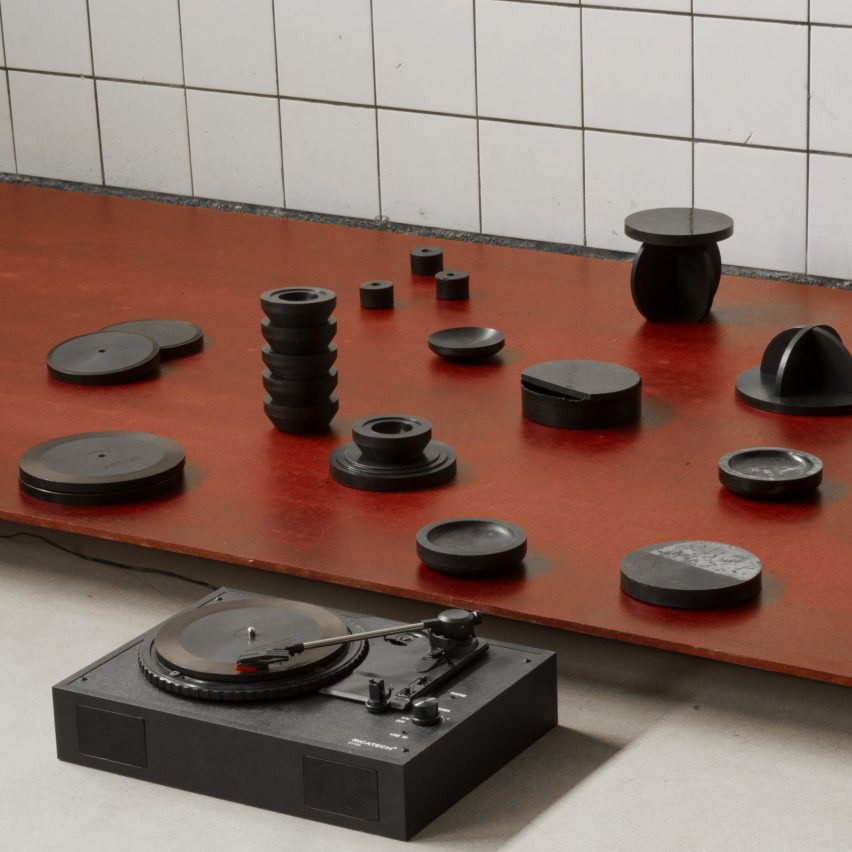
Blood Related by Basse Stittgen
Blood from slaughtered animals destined for the bin has been diverted and turned into dinnerware by designer Basse Stittgen. The blood is dried to a powder then heated and pressed. Albumin, a protein found in blood, acts as a natural binding agent.
Stittgen turned this "protein-based biopolymer" into a range of objects, including a jewellery box and egg cups, hoping to challenge people's aversion to this particular bodily fluid.
Read more about Blood Related ›